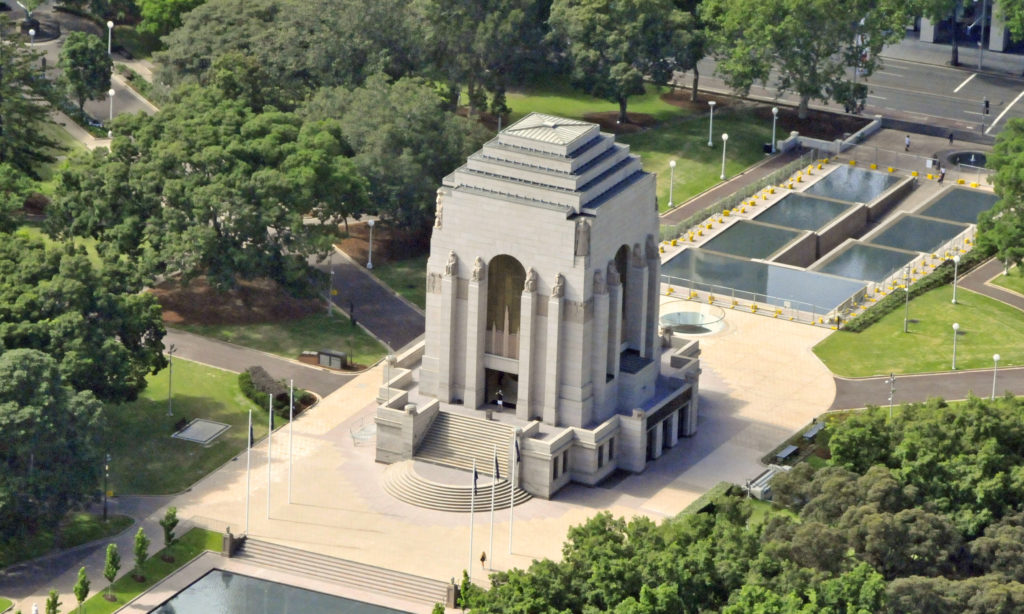
Many consider the Anzac Memorial in Sydney to be the most beautiful Art Deco structure in Australia. Two sculptures proposed for the memorial were a little too evocative.
Australian and New Zealand troops supporting the Allied effort in World War I were known as “Anzac,” short for “Australia and New Zealand Army Corps.” On April 25, 1915, about 25,000 Anzac troops landed on Turkey’s Gallipoli Peninsula as a part of an Allied initiative to seize control of the Dardanelles from the Ottoman Empire. Anzac losses on that first day exceeded 2000 dead and wounded and the Allied effort ultimately failed. The huge casualties were a shock to the people of Australia, then with a population of only about 4.5 million. Australians almost immediately began raising money for a memorial to honor the sacrifices and heroism of the Anzac soldiers. In 1930, following extensive debates about the nature of the memorial, C. Bruce Dellit, a Sydney architect, won a design competition for an Art Deco memorial in Sydney’s Hyde Park. Dellit engaged sculpture Rayer Hoff to create sculptures for the memorial, most of which depicted men and women of Anzac. Two of Hoff’s proposed sculptures were explicitly anti-war. One, “Crucifixion of Civilization 1914,” depicted an attractive nude woman, symbolizing peace, crucified on the sword and shield of Mars, standing over a pyramid of dead Australian soldiers. The other, “Victory after Sacrifice 1918,” depicted another nude woman, symbolizing Australia, also atop a pyramid of dead soldiers. Hoff abandoned these sculptures after local religious leaders condemned them as blasphemous.
The Anzac Memorial was dedicated in 1934. In 1984, it was rededicated to honor all Australians serving their country in war. April 25 is a national day of remembrance in Australia and New Zealand. The place where Anzac troops landed on that day in 1915 is named “Anzac Cove.”
Comments are closed.